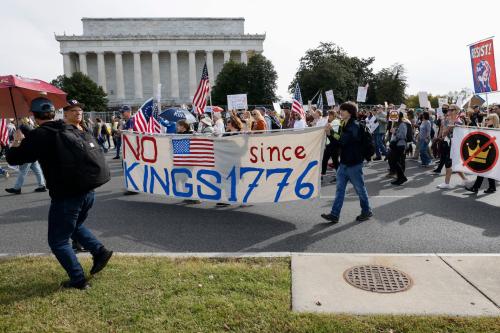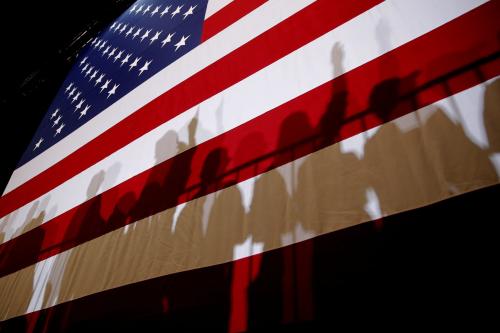Change is in the air in Indian politics, with Narendra Modi, prime ministerial candidate of the center-right Bharatiya Janata Party (BJP), headed toward leading India’s next government. His administration will replace the longest-serving Indian government since 1977 and will—unusually for India—be led by an individual who has been chief minister of a state for nearly a dozen years. With the BJP having won a majority on its own, it will be able to form the first non-Congress-party non-coalition government in India’s history. What change might this bring in Indian foreign policy? First and foremost, it is important to say that there is a lot we don’t know. There is a better sense of Modi’s priorities and preferences when it comes to economic policy, but not as much known about his foreign policy preferences. This is complicated by the fact that who will form his core national security and foreign policy team—the national security advisor, as well as the political and bureaucratic leaderships in the foreign, defense, home and finance ministries—is not yet known.
The structural and ideological basis of Indian foreign policy and the existence of a permanent bureaucracy mean that there will be continuity in many areas, but there is likely to be change on a few fronts. Modi is likely to double down on the theme of foreign policy as foreign economic policy, with India’s economic imperatives driving its international interactions. Diplomats might be expected to serve as force multipliers for Indian economic policy rather than business serving such a function for Indian foreign policy. There is also a possibility of institutional reform of India’s foreign, energy and trade policymaking apparatus—something Modi has discussed—though the feasibility of this is unknown. There has been talk of capacity increases, bringing in outside experts to a greater extent, as well as institutional reorganization. In addition, it’ll be interesting to see whether and how Modi brings in the states and the diaspora into his foreign policy approach – also something he has talked about on a number of occasions. Furthermore, there might be specific changes in India’s relationships with particular partners, for example, a new Indian government might bring relations with Israel more out into the open.
Pakistan: The Wild Card
What about interactions with other key countries? The relationship with Pakistan is perhaps the biggest wild card. It is not known whether Modi will essentially take the line that India needs stability in its neighborhood to ensure economic growth and development, which is the primary and perhaps sole objective for which he will have a clear public mandate. Such an assessment could mean Modi would reach out to Pakistani Prime Minister Nawaz Sharif and take confidence-building measures further, especially in the economic realm. There are some who think he’ll go further—in the Nixon-going-to-China vein. They point to the precedent of the last BJP Prime Minister Atal Bihari Vajpayee reaching out to the Pakistani leadership. However, it is important to keep in mind that that initiative materialized only after the Indian nuclear tests had proved that BJP-led coalition government’s security credentials. Furthermore, the fact that the Kargil conflict between the two countries erupted just a few months after Vajpayee traveled to Lahore has not been forgotten.
There’s a possibility that Modi will take a more hawkish line instead. This is especially likely if, in the first six months or so of his government, there is a major terrorist attack in India or on Indians abroad that can be traced to elements in Pakistan. This is not a far-fetched scenario—terrorist groups might see the period of political transition as an opportunity to derail any chance for peace. And in the event of such an attack it is unlikely that any Indian government will sit back and do nothing or essentially act in a post-Mumbai-like manner—especially if there is little cooperation from the Pakistani government.
China: Economic Opportunity and Security Concern
On India’s other major neighbor—China—there are two Modis. One, the economic-minded leader who wants to do business with and in that country. This is the Modi who had traveled to China as Gujarat’s chief minister, seeking investment and opportunities for Gujarati business there. We’ll probably see more of this Modi at the upcoming BRICS summit in Brazil—likely to be one of his first overseas visits—where he will meet Chinese president Xi Jinping. The other Modi is the security-minded leader who has run on a tougher-on-national-security platform and publicly criticized China as having an “expansionist mindset”—making it a point to do so in territory that China claims. Absent a border crisis, the new Indian government is likely to try to reconcile these two instincts, balancing economic engagement with preparation for a more assertive China.
In the last few weeks, Chinese officials and scholars have, publicly at least, welcomed the prospect of a Modi government. Yet they might come to look with concern at a couple of other potential elements of a Modi foreign and security policy. First, the continued modernization of the Indian military and the upgrading of India’s border infrastructure. Second, the deepening of India’s political and economic ties with countries in East and Southeast Asia, especially Japan, Singapore, South Korea and Vietnam. A third element—a potential rise in nationalism in India—might also become a subject of concern, with implications not just for India’s relations with China, but also its approach toward Pakistan, multilateral issues and the United States.
The U.S.: Will Modi Look Back or Move Forward?
There are two schools of thought on how a Modi government might deal with the United States. Some analysts argue that his (and his advisors’) resentment of the American attitude toward him over the last decade will dominate this dynamic; that he will pay back the lack of official engagement with him since 2005 with an approach that will hold the U.S. at arms length. Others believe that given Modi’s priorities (economic growth, meeting energy needs, balancing against China) and the depth of the India-U.S. relationship, the U.S. will continue to be an essential partner for India under a Modi government even though it might not be warm. Which trajectory the bilateral relationship takes will partly depend on what the U.S.—both the administration and Congress—does on India policy over the next few months, both in terms of style and substance.
Modi has recently commented on each of these three relationships. On Pakistan, he’s put the ball in Islamabad’s court, stressing it needs to take action on the counter-terrorism front to build trust with India. However, he’s also identified a shared goal—fighting poverty and unemployment. On China, he has stated that it is possible for the two countries to resolve their differences and take the Sino-Indian relationship “to another level.” On the U.S., Modi has asserted that he will take the relationship—one that involves “natural allies” and mutual interest—forward.
We will have to wait and see whether Modi’s foreign policy actions matches his recent rhetoric; whether “good days lie ahead”—Modi’s “morning-in-America”-like promise to India—for India’s relations with certain countries or not. How a Modi government’s foreign policy will play out will also depend on how other countries approach India. Furthermore, it will depend on what kind of crises the government will face and how it will react. Finally, much—including Modi’s foreign policymaking space—will depend on domestic factors, including economic growth, social stability and the state of play in Indian politics.
The Brookings Institution is committed to quality, independence, and impact.
We are supported by a diverse array of funders. In line with our values and policies, each Brookings publication represents the sole views of its author(s).



Commentary
A Modi Foreign Policy: The Knowns and Unknowns
May 16, 2014